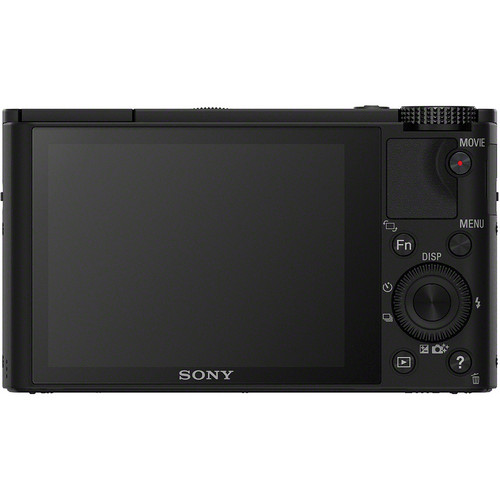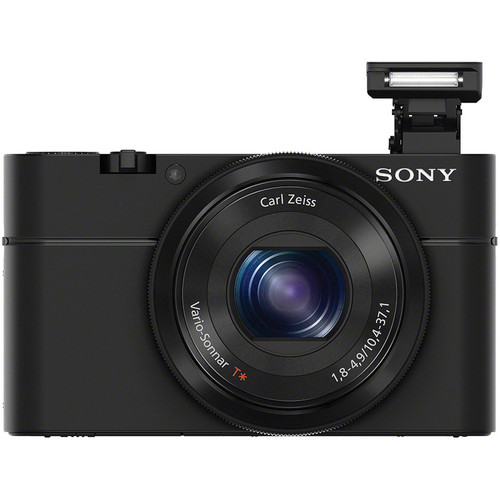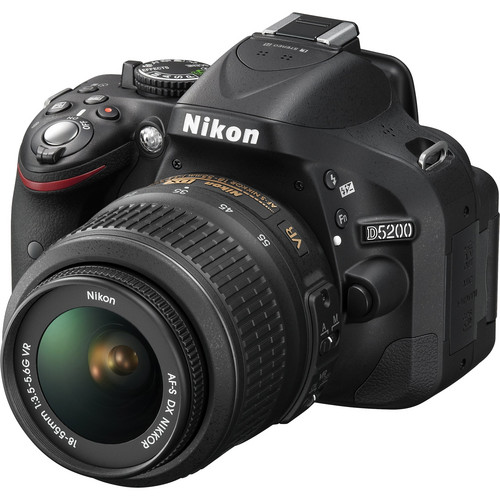
Canon EOS M with 70-200mm f/2.8L IS II USM
Yeah, you’ve got to do this at least once ;-)
Let me just say up front that if you are looking for an article that makes you feel good about wanting an
EOS M then you’ve come to the wrong place. While I enjoy reviewing cameras, there’s no camera that I’ve wanted to return faster than this one because I disliked it so much (well, the
Nikon 1 V1 was close and previously held that title).
Why I Hate This Camera (Skip this if you don’t care why)
The reason why I hated this camera is because I’m just don’t get who the target audience really is for this camera. In the world I live in I see the need for one to three cameras for most people with the following logic:
- Cell Phone Camera – This is the camera that’s always with you and hopefully is one that doesn’t suck. For me it’s the iPhone 5 and it gets the shots that are just for me to share with my friends on Facebook and to capture a moment that would otherwise be lost without it (like where my car is parked at the airport – ha, ha). Cell phones like the Nokia 920 even rival the higher end compact cameras! For many people, this is the only camera they really need – but not you if you are reading this.
- Compact Cameras – This is the camera that you whip out when your cell phone just won’t do, but you don’t want the hassle of the DSLR. You get this camera because you want more control than your cell phone gives you (you know, like being able to control the depth of field, shutter speed to avoid blur or ISO to kill the noise when you can keep your camera stable, etc…). These days these cameras are getting so good that many rival lower end DSLR’s, and some are so fun to use that even photography enthusiasts can enjoy a creative outlet in a compact package. With great cameras like the X20 and RX100 this may be all “real photographers” who shoot for a hobby really need.
- Interchangeable Lens Cameras – This is for the serious enthusiast or part-time semi-pro photographer who is willing to make a serious investment in their photography to match the right lens to the scene. This is the buyer who wants the best and is willing to pay for it. Now for some the appeal of the micro-four thirds meets their needs and for others it’s a full-blown DSLR. However, for both camps I argue that this is the person who wants full creative control over their shots and wants quick access to the change the focus point, shutter speed, aperture, and ISO as needed.
Of course there’s other categories of cameras and pro shooters have a need for multiple interchangeable lens cameras, but the point is that for much of the photography enthusiast world this pretty much covers what most people will need or want.
Now at first glance one might think that the EOS M falls into the third category since it has a large APS-C sensor like you’d find on a 60D, interchangeable lenses and even a hot shoe. However, this camera fails miserably in the all-important “quick access” feature that I think is critical to serious photography.
The fatal flaw of the EOS M is that it is going for the minimalistic approach of the cell phone camera with serious features buried behind nested touch screen menus. It’s clear from the design this camera is designed for the picture taker (I can’t say photographer) who finds a cell phone about as difficult as they can handle, but they long to look like their friends with DSLR’s.
Now I’m not saying these are stupid people because you have to be well off to afford this nearly $800 camera plus the additional lenses and accessories (like a flash which isn’t included), but it seems that Canon is targeting this to someone who finds a Sony NEX-7 to be just too complex to use.
Despite the strengths of this camera, I just don’t see the point of a camera that has been dumbed down even more than a s110, yet it has no built-in flash and it requires you to read the manual (which many DSLR owners fail to do) just to get out of the cell phone-like automatic modes. Perhaps, if you are an amateur videographer you might find some value in this camera, but even then I’d argue that you’d want more control and features than this camera offers.
What I Do Like About this Camera

f/4 @ 28 mm (24-105mm), 1/320, ISO 100, AWB
Unprocessed In-Camera JPEG – Standard Picture Style
Okay, so now that I got that off my chest I can focus on what’s good about this camera. In practice I found this camera to be very much like a T4i in a nearly touch only body with what seemed to be better ISO performance and dynamic range. This is a good thing, especially with the must have EF/EF-S lens adapter as it means you can get some great shots if you work hard enough at it.
A Real World Lens Comparison
In my sample gallery I have bookshelf shots for those who want to pixel peep three of the lenses I tested with, but here’s a quick real world practical test that illustrates similar behavior I found with other frames. These shots were chosen not to send a religious message but simply because they were good examples under challenging conditions and are similar to high ISO shots of this same subject used in other reviews.

f/2.8 @ 22 mm (kit lens), 1/40, ISO 800
Lack of stabilization and sharpness
made me quickly avoid the 22mm lens
In my testing I found that the included 22m kit lens was disappointing (sample shown above), but the optically darker but stabilized 18-55mm zoom lens was much more practical in everyday use. Here’s an example of the same shot above with the :

The EF-M 18-55mm f/3.5-5.6 IS STM Lens performed well for a $299 lens
f/4 @ 26 mm (18-55mm), 1/50, ISO 1600, AWB, No Flash
If you have an investment in EF or EF-S lenses, then the EF/EF-S lens adapter is a must as you can use the best lenses Canon makes to get great results. The downside is that the improved AF performance (and IS when applicable) comes at a cost of draining the battery very quickly. Here’s a sample using my old EF 24-105mm f/4L IS with the adapter which offers edge to edge sharpness improvement at a cost of $799 more for the lens plus another $200 for the adapter:

My EF 24-105mm f/4L IS (with adapter) had better edge sharpness, but it cost $700 more!
f/4 @ 24 mm (24-105mm), 1/40, ISO 1600, AWB
If you are going to get this camera your takeaway should be to get the adapter if you own existing Canon lenses, but if you don’t you’ll find the 18-55mm to be a good starter lens in terms of both size and performance (and especially battery life).
Good Lenses + Patience = Sometimes Good Results

When mastered, the EOS M can produce excellent results even with EF-M lenses
f/5.6 @ 44 mm (18-55mm), 1/80, ISO 640, No Flash, AWB
Click for original in-camera JPEG
If you are prepared to read the manual for this camera and learn how to use it properly, it will reward you when you match it to the right lens. It’s also quiet handy to point on the touch screen LCD to quickly pick your AF point (like the T4i offers), but you must be careful as grabbing this small camera body can also result in accidentally relocating the AF point – A LOT.
Bookshelf Test

Bookshelf Testing did include the 70-200mm
If you are frequent reader and are looking for my bookshelf test shots, you can find an assortment with three lenses at http://www.ronmartinsen.com/canon/eosm/e52365dee. As usual for non DSLR’s these are all in-camera JPEG’s all shot the same way. Touch to focus made it hard to get the same level of accuracy as I get with my other cameras tested, and it seemed easy for the meter to want to over expose by 1 stop.

In the center the smaller lenses perform well, but it’s at the edges where the expensive lenses show their value. Even at up to 55mm the EF-M lenses were only super sharp in the center.

Using the 70-200mm, here’s the best I got out of this sensor (but it was 1 stop over exposed)
f/5.6 @ 100 mm, 10s, ISO 100, No Flash, Manual Mode, AWB

Using the 70-200mm, here’s the best of the worst ISO 12,800
You MUST view at full size to see compare details
f/5.6 @ 100 mm, 1/13, ISO 12800
Overall I felt that ISO performance up to ISO 1600 was excellent, but even 3200 was good. 6400 under the right conditions was tolerable and 12,800 was usable but not suitable for printing above 4x6 prints.
For those wondering about RAW’s, see my other articles as to why I don’t include them. Yes, I do have the RAW’s and will make them available on demand for personal use only if you give me a free location to drop them. However, the delta of difference is the same in the RAW’s vs JPEG’s.
Video
I’m no videographer, but overall I found that with a good lens and decent light the video quality was very good. This is no camcorder though so expect DSLR like performance. The STM lenses do allow for near silent zooming and auto focus and the built-in audio was on par with DSLR’s.
Real World Sample Shots
Click here to see my full gallery of real world sample shots. These are the in-camera JPEG’s with zero post processing. With exception of the bookcase shots, all were taken handheld and where possible in the automatic modes to test the camera – not the photographer.
Be sure to look at the filenames to see which lens was used. Blurry or focus miss shots were included to point out shortcomings of focusing by touch or using the auto modes.

Bokeh freaks – yes, it’s possible – even here where I was riding at 70mph on a rough road <g>
f/4 @ 58 mm (24-105mm), 1/500, ISO 100, AWB, No Flash

The large APS-C sensor means you can control the depth of field very well
f/5 @ 37 mm (18-55mm), 1/30, ISO 6400, AWB, No Flash

I was impressed with the dynamic range and detail in the images
f/4.5 @ 28mm (18-55mm), 1/50, ISO 250, No Flash, AWB

High ISO performance was good, and seemed superior to the T4i, 60D and 7D
f/4 @ 105mm (24-105mm), 1/50, ISO 6400, AWB, No Flash

This doesn’t appear to be a lame G1X with interchange lenses as color depth seems to be better
f/5 @ 42mm (18-55mm), 1/80, ISO 160, No Flash, AWB

At times like this, I wanted to like this camera
f/4 @ 18mm (18-55mm), 1/30, ISO 3200, No Flash, AWB

Despite its size, this is no point and shoot. Just like a DSLR can burn you, so will this camera.
Sadly, I found it’s slow AF – even with good lenses to be problematic.
Unless you went to Manual mode, I found moving people to be impossible in all AF modes

External flash is required, yet painfully difficult to use in all but 0EV ETTL
f/4 @ 25mm (18-55mm), 1/60, ISO 1600, 600EX-RT Flash
Mouse over to see the ISO 4000 no flash version

I preferred the Shade White Balance over Vivid Mode (mouse over)
f/4 @ 45 mm (24-105mm), 1/80, ISO 160, No Flash
Conclusion
Putting a 24-105mm lens and a 600EX-RT on this body just feels stupid, and its touch screen makes it so easy to accidentally reposition the focus point that it becomes a real challenge to use this camera. This coupled with the reality that you have to go on a mission to change many camera settings made this a very unenjoyable camera to use, despite it’s decent image quality. This means you are then forced to either live without a flash or use the lame and bulky 90EX Flash and a EOS-M lens which would probably be bashed if that caliber lens were sold for a real DSLR.
In the end, I’d rather have a Sony NEX-7 which offers a built-in flash and superior physical controls as well as almost all of the benefits of the EOS M. I applaud Canon for trying to compete in the new interchangeable lens compact camera segment, but honestly this is almost as bad as the abysmal Nikon 1 V1. Canon and Nikon are the kings of the DSLR’s, but it seems that the small camera makers (i.e., Fujifilm, Panasonic, Sony and Olympus) still own this space.
If you are a parent or pet owner, I DO NOT recommend that you get this camera. It will frustrate you to no end as its too cumbersome to set the camera to the settings you need to get the shot (and even if you do, many settings are lost when the power goes off automatically). The touch to focus is also impossible for a child and the shutter lag makes the face tracking nearly useless (see the blurry photos at Tokyo Steakhouse in my gallery).
Where To Buy
If you are a die hard Canon person who has just gotta have one of these, and you appreciated my honesty then please support this blog by using my links when ordering. Empty your cart and click the links below to give me credit for your referral:
Other articles you might enjoy…
Disclosure
B&H loaned this camera and two lenses to me for the purpose of this review. If you make a purchase using links found in this article, I may make a commission.
NOTE: This site requires cookies and uses affiliate linking to sites that use cookies.
. Either way, your support is greatly appreciated!
This blog is intended for freelance writing and sharing of opinions and is not a representative of any of the companies whose links are provided on this site.
The opinions provided are of Ron Martinsen alone and do not reflect the view of any other entity

























































